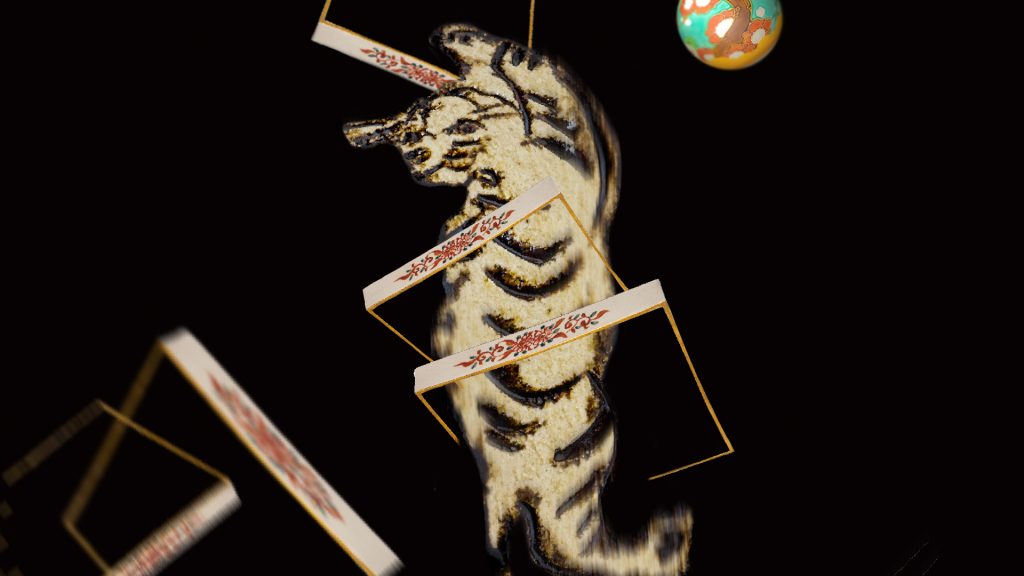For English, please scroll down
上講《玅÷妙:日本陶磁器的陽性載體 & 陰性書寫》
時間:2017.09.07(四)下午7-9時
下講 《裝×飾:日本陶瓷器的自戀主義 & 戀物情執》
時間:2017.09.09(六)下午2-4時
地點:台北當代藝術中心,保安街49巷11號(捷運大橋頭站)
主講人:陳彥璋
本活動將以中文進行。
若工藝與美術運動必須訴諸人類的時代精神,超越心靈的再臨,甚至能應和信念、信仰的象徵主義,那麼創造「符號洗練/玩物」的美感體驗、並賦予「意境深遠/見性」的工藝作品,正可達玩物而見性的美意。
工藝美術面臨當今通訊傳播發達的時代,在龐雜的景觀社會中,各種媒體網路輸出輸入不分古今地理、史料、優劣或真偽的資訊、圖像、符號與訊息,導致感官世界被虛擬實境包圍、滲透、破壞、切割、消解、突變等,而在認知體系混亂、反覆滲入人類對美的理解與行動之際,同時也嚴峻地挑戰工藝與美術的知行合一。
因此,回返觀照日常最常使用的物件如陶瓷器物,並假以現象分析來進一步觀察身旁所處的社會意識與價值觀點,將開啟我們重新以身體體感來親近和理解自身的文化脈絡的路徑。座談將採「性別規訓」與「後設結構」二個方法論,從器形設計、裝飾工巧、圖案語意、使用情境等來鑑賞分析,其中涉及之想像能力與實踐理性,都隱喻了性別的元素與發揮空間。換句話說,社會民情與藝文素養,不妨直接了當地先顯揚器物的性別運動,同步再提倡器物的形而上與形而下之學!如此來閱讀東洋陶瓷的性別議題,還能進一步探索器物文化脈絡之於「飲食、陳設、轉喻」這三方面的陰陽象數氛圍。
此主題座談採上下二講,主要著重專注在東洋陶瓷的代表者日本色繪;同時暗喻參照中國陶瓷範式,說明陶器的陰陽性別與界限,再以瓷器外銷的裝飾設置,企圖先啟「玅妙的意欲與愛慾」為前提,再臨「裝飾的自我與變形」為主題,旁徵博引器物使用的儀式與對應的體感,來觀見人性的情慾或人心的感官;冀望能依此線索,拓寬工藝精神與美術價值,認知自文藝復興以來的「神人同性」;或是浪漫主義以來的「雌雄同體」,反思當代之物質主義;考據東洋陶瓷,如何可以成為詮釋與關懷的範式,這才是形而上、形而下之權量、身心之轉化,藉此說明東方品味與境界之門。
上講將從西洋工藝美術對於陽性與陰性的基本定義作為導言,觀察文藝復興時期以降,文化脈絡中初探父權思考與神人屬性的傳統,並特別從維多利亞時代後的性別變化現象,理解母體置換與雌雄共生。本次講堂也將深入介紹幾種陽性載體和陰性書寫的歷史範例。
下講將從東洋工藝美術對於自戀與戀物的基本界說開始談起,分析自戀的方法論、鏡像論與同性別的繁瑣關涉;另將戀物情節的演繹透過陶瓷器的設計和造型來理解愛慾之表現。
關於主講人
陳彥璋,東海大學哲學系博士候選人、專業古董鑑藏家。研究興趣廣博,涉獵東西方哲史、文學、宗教、藝術等,致力於古典博物與傳統藝道的研究,以及文化教育的推廣。長期以「傳統私塾 & 創意學堂」的授課方式,來傳遞古今工藝美術,並且透過關懷世代來發展美術與思想的轉譯空間,現為台北高野美術執行總監,甫出版《色繪古都:京燒陶瓷器漫步》一書。
I. Inspiring Manifestations: Masculine Vehicle and Feminine Writing of Japanese Ceramics and Pottery
Time: 2017.09.07 (Thursday), 7:00-9:00PM
II. Embellishing Adornments: Narcissism and Fetishism in Japanese Ceramics and Porcelain
Time: 2017.09.09 (Saturday), 2:00-4:00 PM
Venue: Taipei Contemporary Art Center, No. 11, Lane 49, Baoan Street (MRT: Daqiaotao Station)
Speaker: Daniel Chen
The talks will be conducted in Chinese.
Throughout human civilization the arts and crafts movement have revealed zeitgeist and achieved spiritual embodiments. By presenting belief and religion with corresponding symbols, artists or craftsmen present an aesthetic experience through the manipulation of imagination and the understanding of symbols and artifacts. Both recur through the artistic practice and the craft mastership.
With the widespread of information and the growing complexity of today’s society, the practices of art and craft are being critically evaluated. Our human senses are being bombarded with data, images, symbols and messages that needs to be constantly fact-checked regardless of where and when they are obtained. The massive amount of information penetrates, mediates, sabotages and mutates our human senses and interferes with the way we understand and act with and around art. As such, there is a disconnect between the knowledge and the physical process of making traditional forms of art and craft.
Therefore, the proposal focuses our attention back to everyday objects such as ceramic products. It analyzes the social consciousness and values beyond their appearances in hopes of energizing our body and senses to reexamine our own cultural context. The talk series will employ two methodologies which are gender criticism and post-structuralism. These methodologies will be used to study form, style, embellishment, iconology and application of ceramics. Furthermore, they will help to understand how the imaginary force and rational practice behind their production inform various gendered elements and spatiality. Thus if we acknowledge the gender movement of artifacts, we can approach the metaphysics and science of them, while simultaneously promoting art and culture education. By understanding the gender issues from eastern ceramics, we will be able to further investigate a broader range of gender studies towards food culture, interior display and metaphor associations with the help of technology
The series contains two lectures focusing on Japanese ceramic coloring and Chinese ceramic styles, which explores gender and the limits of ceramics. In addition, the lectures will shed light to their export history in terms of their embellishment. The erotic subjects will be revealed through the transformation of decorative styles and the corresponding rituals and bodily senses. Therefore, ceramics can be considered as an instrument to appreciate human desires and sensibilities. Such understanding could generate a new understanding of craftsmanship and artistic values, tracing anthropomorphism dating back to the Renaissance or hermaphrodites from Romanticism, providing a different reflection on contemporary materialism. To understand how ceramics could provide methods for studying metaphysics and science. And further the transformation of body and minds in regards to Eastern philosophy.
The first lecture will begin with an introduction of the basic definitions of masculinity and femininity in Western crafting culture. The tradition of anthropomorphism and patriarchal thinking since the Renaissance and the transgender expressions since the Victorian era. In addition to presenting some examples of muscular vehicles and feminine writings on ceramic objects.
The second lecture will discuss how narcissism and fetishism exist in oriental ceramics craft. Here we have to provide an in-depth analysis on narcissism and fetishism. We will try to explain its study and method, and to explain how they correspond with LGBT identities. Thus the design and style of ceramics, as well as the study of fetishism, can help us explore erotic attitudes.
About Speaker
Daniel Chen, Ph.D Candidate of Philosophy in Tunghai University, is a professional antique connoisseur and collector. Chen’s research categories widely explores Western and East Asian philosophy, history, literature, art and religion. He dedicated to studying classical art and craft heritages. Chen lectures in both private institutes and graduate schools to promote the pragmatic, aesthetic knowledges from ancient to contemporary time. Currently Chen is Executive Director of Meizon Art & Craft Co. His new book Colouring Miyako, Wandering in Kyoto Ceramics and Porcelains was just published earlier this year.

